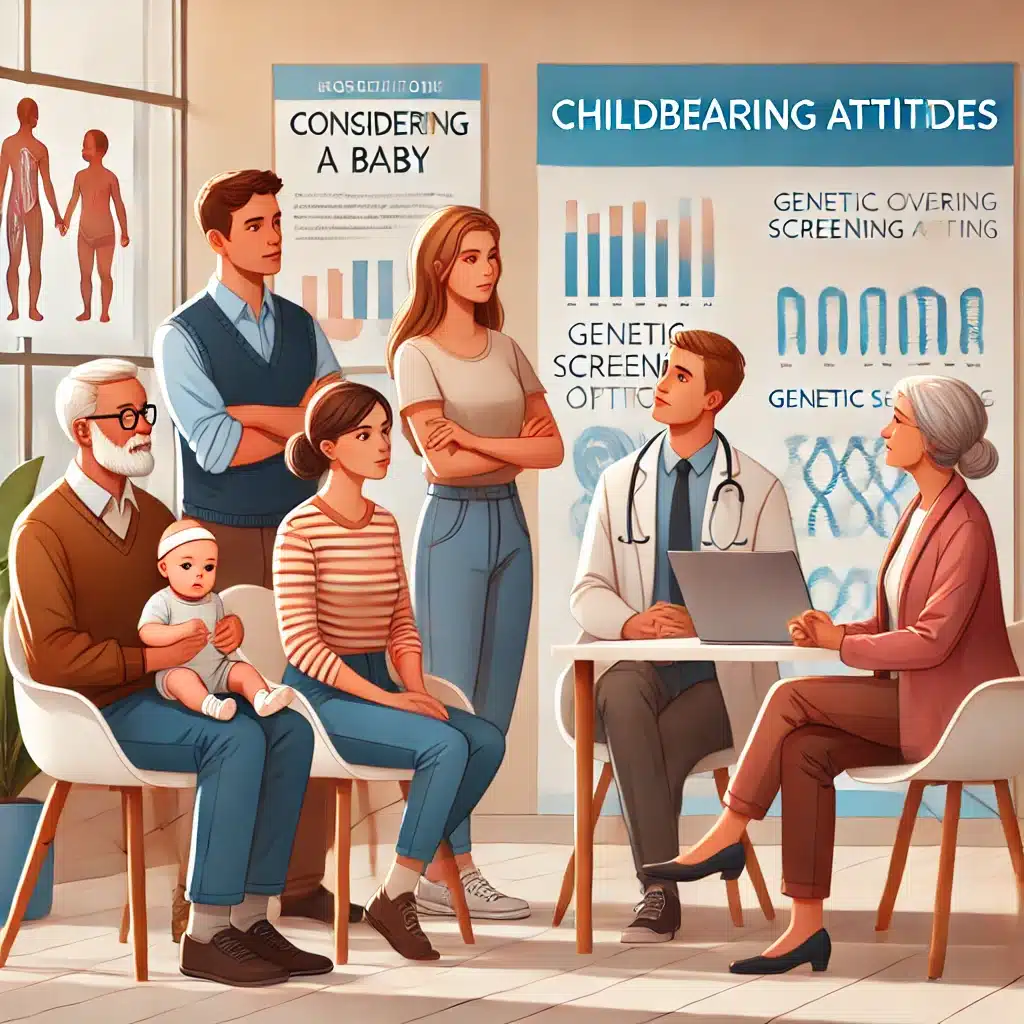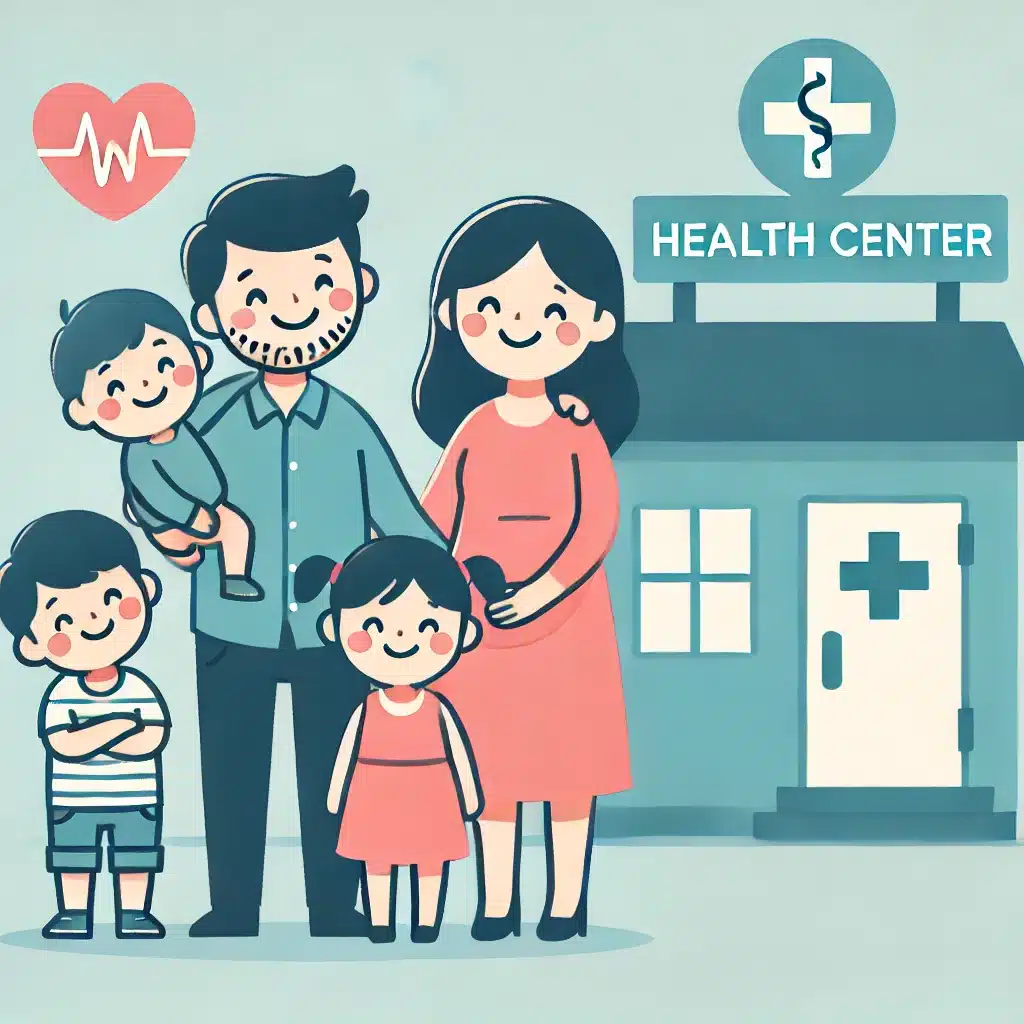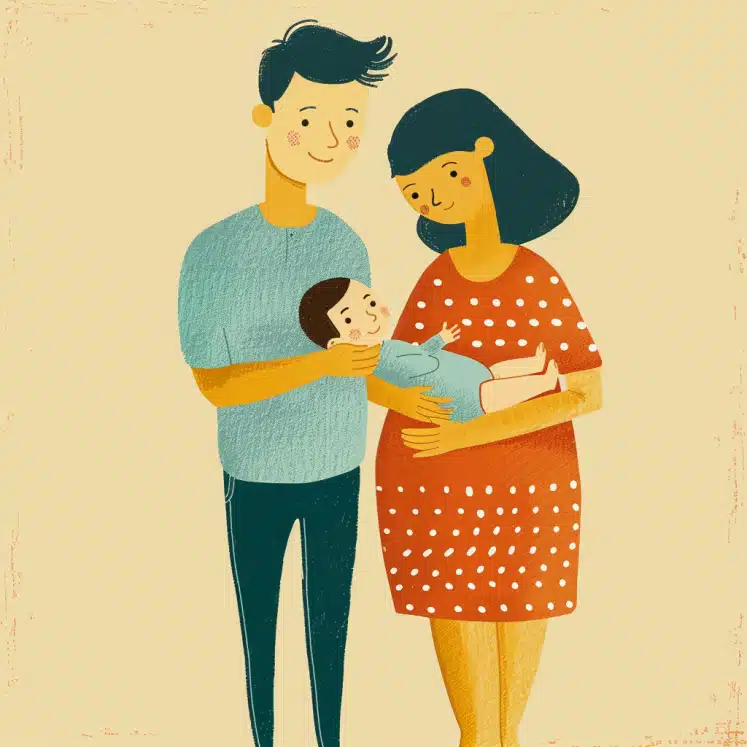This study examined how family health, perceived relationship quality, and attitudes toward childbearing are interconnected in Iranian women using the WHO model, finding that better family health and relationship quality positively influence childbearing attitudes.
Highlights:
- Significant Positive Impact of Family Health: Family health had the most significant and positive direct effect on attitudes toward childbearing (B = 0.334).
- Influence of Relationship Quality: Perceived relationship quality components significantly influenced attitudes toward childbearing both directly (B = 0.698) and indirectly through family health.
- Negative Effect of Number of Children: The number of children had the most significant negative impact on attitudes toward childbearing (B = -0.057).
- Path Analysis Results: Duration of married life positively affected attitudes toward childbearing both directly (B = 0.387) and indirectly.
- Model Fit: The path analysis model fit well with the conceptual model, demonstrating the rationality of the adjusted relationships between variables.
Source: Brain & Behavior (2024)
Major Findings: Childbearing Attitudes vs. Family Health & Relationships (2024)
1. Significant Positive Impact of Family Health
The study found that family health had the most significant positive impact on attitudes toward childbearing. This was quantified with a coefficient (B) of 0.334 in the path analysis.
Explanation: A higher score in family health, which encompasses aspects like marital satisfaction, meeting the needs of family members, intimacy, and cohesion, directly correlates with more positive attitudes toward having children.
Implications: Policies aimed at improving family health could foster more favorable attitudes towards childbearing, potentially addressing declining fertility rates.
2. Influence of Relationship Quality
Relationship quality components (satisfaction, passion, commitment, intimacy, trust, and love) significantly influenced attitudes toward childbearing with a direct effect coefficient of 0.698.
Direct & Indirect Effects: Good relationship quality directly boosts positive attitudes towards childbearing and also indirectly through its positive impact on family health.
Implications: Enhancing the quality of marital relationships through counseling and support programs can positively influence childbearing attitudes, emphasizing the role of strong, healthy partnerships.
3. Negative Effect of Number of Children
The study identified a significant negative impact of the number of children on attitudes toward having more children, with a coefficient of -0.057.
Explanation: As the number of children in a family increases, the desire or positive attitude towards having additional children decreases. This could be due to the increased burden and responsibilities that come with more children.
Implications: Understanding this dynamic can help in formulating family planning policies that address the practical concerns of larger families.
4. Effect of Marriage Duration
The duration of married life showed significant positive effects on attitudes toward childbearing both directly (B = 0.387) and indirectly.
Explanation: Longer marriages tend to develop more stable and understanding relationships, leading to more positive attitudes towards having children.
Implications: Long-term marital stability is crucial for positive childbearing attitudes, highlighting the need for support systems that strengthen marriages over time.
5. Comprehensive Model Fit
The overall model used in the study fit well with the real-life data, demonstrating the reliability of the findings.
Explanation: The relationships and effects observed between family health, relationship quality, and attitudes toward childbearing are reflective of actual dynamics within the population studied.
Implications: The model’s validity supports the comprehensive approach of considering multiple factors in understanding and addressing attitudes towards childbearing.
6. Overall Takeaways
The findings of the study underscore the pivotal role of family health and relationship quality in shaping attitudes toward childbearing among Iranian women.
Healthier families and higher quality relationships are strongly associated with positive childbearing attitudes. Conversely, having more children tends to reduce the desire for additional children.
These insights are crucial for developing policies and programs aimed at improving family health and relationship quality, which in turn could positively influence childbearing attitudes and address declining fertility rates.
Attitudes Toward Childbearing in Iranian Women vs. Family Health & Relationships (2024)

The study aimed to investigate the causal relationships between family health, perceived relationship quality components, and attitudes toward childbearing among Iranian women, using the WHO model of Social Determinants of Health (SDH).
Sample
- Participants: 400 married women (Iranian)
- Selection: Multistage stratified cluster sampling
- Inclusion Criteria: Married women (15-49 years), Iranian nationality, minimum literacy, written consent, no physical or mental illness
- Exclusion Criteria: Infertile, pregnant, or breastfeeding women, incomplete questionnaire responses
Methods
- Design: Cross-sectional descriptive-analytical study conducted from February to June 2023
- Instruments: Socioeconomic status questionnaire, Perceived Relationship Quality Components (PRQC) scale, Family-of-Origin Health Scale (FOS), Attitudes toward Fertility and Childbearing Scale (AFCS), and a demographic checklist
- Analysis: Path analysis using SPSS 25 and LISREL 8.8 to assess direct and indirect effects on childbearing attitudes
- Procedures: Health centers were selected based on recommendations and data from the Integrated Health System of Iran (SIB). Participants were briefed on the study and assured confidentiality before completing the questionnaires.
Limitations
- Questionnaire-Based Data: Reliance on self-reported data may affect accuracy due to the number of questions and potential for response bias.
- Sample Representation: The sample was not taken from all parts of Karaj city, which might limit the generalizability of the findings.
Improving Attitudes Towards Childbearing: Recommendations Based on the Study

1. Family Health Programs
Develop initiatives that focus on physical, mental, and emotional well-being of family members.
Offer regular health check-ups, mental health support, and family counseling at community health centers.
Promote healthy lifestyle practices through community workshops and educational campaigns.
2. Strengthen Marital Relationships
Establish accessible relationship counseling services that focus on improving communication, conflict resolution, and intimacy between partners.
Conduct workshops and seminars on marital satisfaction, love, passion, commitment, trust, and intimacy.
Encourage couples to participate in relationship enrichment programs regularly.
3. Support Socioeconomic Stability
Create policies that provide financial support to families, such as child allowances, tax benefits, and affordable childcare services.
Improve access to education and job opportunities for both men and women to reduce economic pressures that discourage childbearing.
Ensure housing stability and improve living conditions through government programs.
4. Tailor Family Planning Services
Offer personalized family planning advice that considers individual family circumstances and the negative impact of having more children on childbearing attitudes.
Provide information and support on birth spacing and reproductive health to help families make informed decisions.
Encourage the use of family planning methods that align with personal and cultural values.
5. Raise Awareness through Education
Launch public awareness campaigns highlighting the importance of family health and relationship quality in positive childbearing attitudes.
Integrate family health and relationship education into school curricula to foster understanding from a young age.
Use media platforms to disseminate information on the benefits of healthy family dynamics and strong relationships.
6. Integrate Comprehensive Health Center Practices
Incorporate routine screenings for family health and relationship quality in health center services.
Train healthcare providers to identify and address issues related to family health and relationship quality during regular consultations.
Develop protocols for referring families to specialized services when needed.
Conclusion: Role of Family Health & Relationships in Childbearing Attitudes
This study highlights the crucial role of family health and relationship quality in shaping attitudes toward childbearing among Iranian women.
It demonstrates that healthier families and better marital relationships significantly enhance positive attitudes towards having children, while larger family sizes tend to reduce the desire for additional children.
These findings suggest that interventions aimed at improving family health and relationship quality could be effective in addressing declining fertility rates.
Policymakers and healthcare providers should focus on these areas, integrating family health and relationship counseling into routine health services to foster a supportive environment for childbearing.
By addressing these factors, it is possible to positively influence fertility trends and support family growth in a holistic and sustainable manner.
References
- Study: Causal association between family health, perceived relationship quality components, and attitudes toward childbearing in Iranian women: A WHO model analysis (2024)
- Authors: Atefeh Taheri et al.







